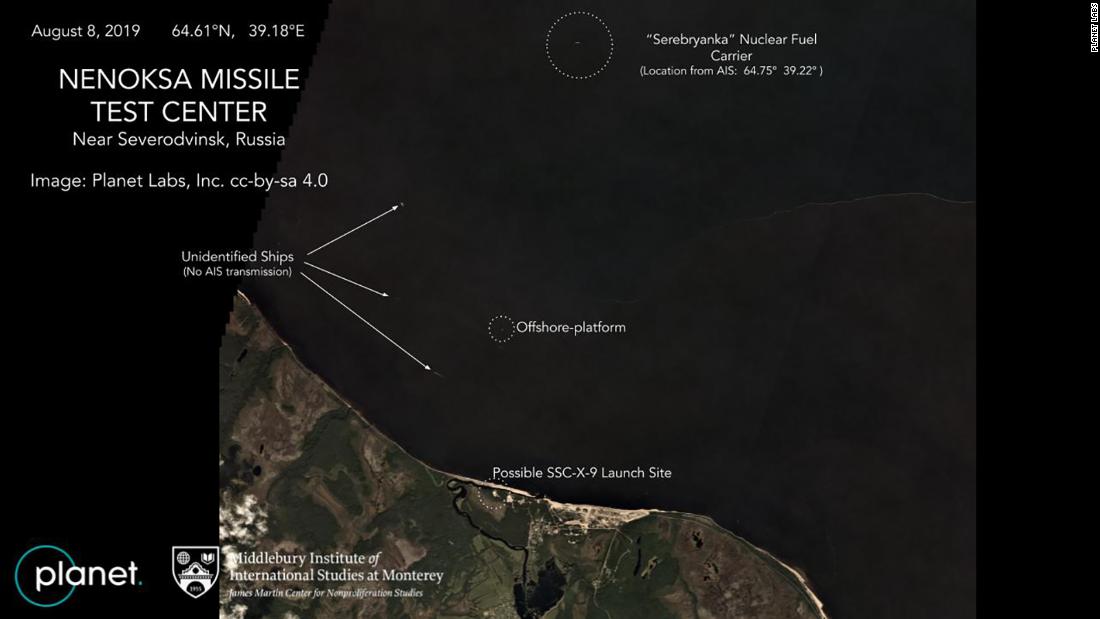[ad_1]
According to the official account, the elite scientists killed in the accident — Alexey Vyushin, Yevgeny Koratayev, Vyacheslav Lipshev, Sergey Pichugin and Vladislav Yanovsky — were killed during tests on a liquid propulsion system involving isotopes.
Sarov, known during the Cold War as Arzamas-16, is one of Russia’s secret cities. Closed to foreigners and accessible only by special permit, Sarov is the rough equivalent to Los Alamos, New Mexico, one of the birthplaces of US nuclear weapons design.
In other words, the test most likely had some nuclear dimension. And the reflexive secrecy of the government of Russian President Vladimir Putin has only further fueled speculation about the cause of the accident.
Here’s what we know: authorities in northern Russia detected a brief rise in radiation levels following an explosion at a military training ground there, Russian state news agency TASS reported Thursday.
Severodvinsk has a naval base and shipyard and TASS, citing emergency services, initially said the incident began onboard a ship.
The Arkhangelsk regional governor told TASS that the area around the explosion would not be evacuated. But the reports of the brief radiation spike and the lack of information around the incident raised immediate red flags.
‘An unusual component’
While the Russian Ministry of Defense admitted something went wrong, informed observers immediately raised questions about what, exactly, had been going on at the test range.
Jeffrey Lewis, an arms-control expert at the Middlebury Institute of International Studies at Monterey, was one of the first to suggest that missile accident had an unusual component.
On Twitter, Lewis linked to an August 8 picture captured by satellite imaging company Planet Labs, showing the Serebryanka, a nuclear fuel carrier, near the missile test site in Russia where the explosion and fire broke out.
The ship’s presence, he speculated, might have been related to the testing of a nuclear-powered cruise missile.
The Serebrynka, Lewis noted, was the same ship used to recover a nuclear propulsion unit from a failed nuclear-powered cruise missile test last summer off Novaya Zemlya, an archipelago in the Arctic Ocean.
“We are skeptical of the claim that what was being tested was a liquid propellant jet engine,” Lewis told CNN, referring to last week’s explosion. “We think it was a nuclear-powered cruise missile that they call Burevestnik.” The same missile is known by NATO members as SCC-X-Skyfall.
A US official has also told CNN that the explosion was “likely” linked to the Skyfall prototype. US President Donald Trump also made the connection, tweeting on Monday: “The Russian ‘Skyfall’ explosion has people worried about the air and around the facility, and far beyond. Not good!”
Questions linger today about whether something dangerous has been released following this incident. According to the local website 29.ru, officials have shut down the Dvina Bay in the White Sea for swimming for a month.
Is it the new Chernobyl? Certainly, no massive plume of radiation has been detected, as happened over Scandinavia before the Soviets acknowledged the 1986 disaster. But official secrecy often fuels fears of a cover-up.
In this case, the accident seems more reminiscent of an incident that happened 19 years ago: the sinking of the nuclear-powered submarine, the Kursk, led to the deaths of more than 100 sailors and was a public-relations disaster for Putin, who was still newly in office.
Today, unlike then, Putin now enjoys a near-total monopoly on Russian media. And the Kremlin thus far is working to contain and control the embarrassing news about the accident at a secret military test range.
CNN’s Zachary Cohen, Mary Ilyushina, Zahra Ullah and Barbara Starr contributed to this report.
[ad_2]
Source link




